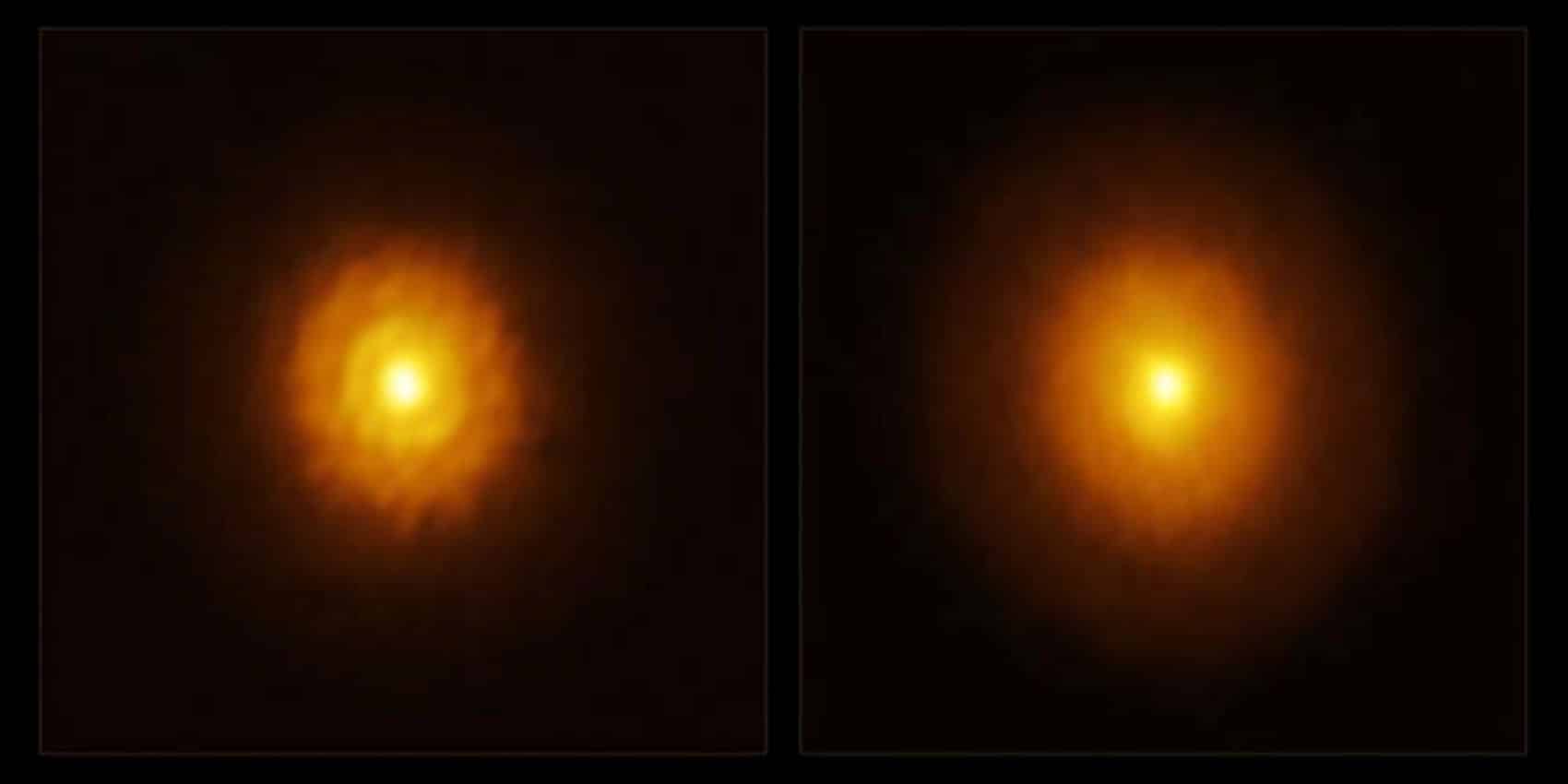Astronomers have just revealed a massive exoplanet anywhere from three to ten times the size of Jupiter, lurking within the dusty cradle surrounding a young star named MP Mus. Previously thought to be alone in space, MP Mus now appears to be hosting a celestial heavyweight in its pancake-flat protoplanetary disc.
The breakthrough came from a cosmic tag-team effort. The ALMA telescope peered deeper into the dusty disc at longer wavelengths, while the Gaia space observatory noticed something peculiar: MP Mus was wobbling.
That wobble, coupled with newly discovered gaps and cavities in the disc, pointed to the gravitational pull of a hidden planet shaping the scene from within. Using computer modeling, the international team confirmed that this wobble was likely caused by a gas giant, roughly 1 to 3 times farther from MP Mus than Earth is from our Sun.
“Our earlier view was like staring at a foggy window,” said lead researcher Dr. Álvaro Ribas. “But using longer wavelengths revealed a complex architecture—carved gaps and cavities that scream planet formation.”
This marks the first time Gaia has helped detect an exoplanet within a protoplanetary disc, offering a new blueprint for finding stealthy planets buried in starlight and cosmic dust.
The team believes that upgrades to ALMA and future instruments, such as the next-generation Very Large Array (ngVLA), may open the door to discovering even more hidden worlds and perhaps offer clues to how our own Solar System came to be.
Journal Reference
- Ribas, Á., Vioque, M., Zagaria, F. et al. A young gas giant and hidden substructures in a protoplanetary disk. Nat Astron (2025). DOI: 10.1038/s41550-025-02576-w
